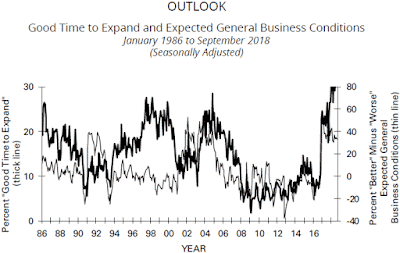The September 2018
New Home Sales report was
released by the Commerce Department this morning:
Predicted: 625,000
Actual New Home Sales: 553,000
------------------------------------------------------
Change from One Month Previous:
-5.5%
Change from One Year Previous
: -13.2%
------------------------------------------------------
Median Price for a New Home during September 2018
: $320,000
========
Average Price for a New Home during September 2018
: $377,200
------------------------------------------------------
Inventory: 7.1 months (not seasonally adjusted.)
------------------------------------------------------
================================
Compiled jointly by the U.S. Commerce Department and the U.S. Department of Housing and Urban Development, the yellow-highlighted figure above is the seasonally adjusted and annualized number of newly-built homes with committed buyers for the indicated month.
The "predicted" figure is what economists were expecting, while the "actual" is the true or real figure.
The New Home Sales report is watched by economists and investors because it offers insight into the state of the U.S. housing market, and also provides data that can be used to predict sales of large household furniture and appliances like refrigerators, air conditioners, microwave ovens, etc.
Labels: hard_data, housing, new_home_sales, real_estate










